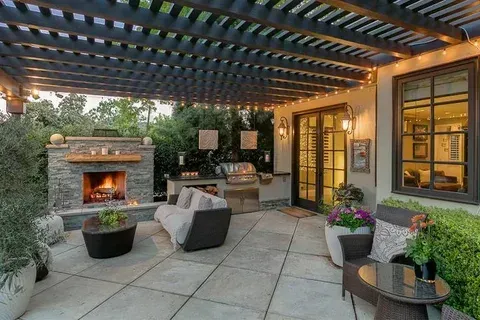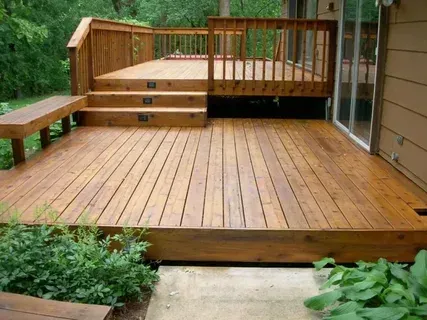How Regular Maintenance Saves You on Costly Fence Repair?
Fences are an important part of any property, offering security, privacy, and a nice appearance. But just like anything else, fences need care and maintenance to keep working well. If you don’t maintain your fence regularly, it can break down over time, leading to expensive repairs or even the need to replace the whole thing. In this blog, we’ll explain how regular maintenance can help prevent costly fence repair and why it’s important to take care of your fence.
Why Regular Fence Repair and Maintenance is Important
When it comes to caring for your fence, many homeowners only think about it when something goes wrong. However, regular maintenance is key to keeping your fence strong and lasting longer. By doing simple checks and taking care of minor repairs as they happen, you can avoid expensive fence repair later on.
Fences are exposed to weather every day. They face everything from strong sun and heavy rain to freezing cold and strong winds. This weather takes its toll over time. Regular maintenance, such as cleaning, sealing, and fixing weak spots, can stop these weather conditions from causing big damage. By staying on top of small repairs, you can avoid costly fence repair in the future.
Preventing Rot and Decay
One of the most common problems for fences, especially wooden ones, is rot. Wood can easily soak up water, causing it to swell, bend, and eventually rot. If this issue is not taken care of right away, it can lead to major damage that may require expensive fence repair.
To prevent rot, it’s important to regularly check the posts, rails, and panels for signs of moisture damage. Applying a good-quality wood sealant or stain can also protect the wood from water damage. By resealing your fence every couple of years, you can keep water from causing rot. This simple step can help you avoid needing expensive fence repair or replacement later.
Preventing Fence Post Damage
The posts of your fence are its foundation. If these posts are damaged, the entire fence could fall apart. Posts are especially vulnerable to shifting and rotting, especially if they were not installed correctly or have not been properly maintained. If the posts start to weaken, your fence can start to lean, sag, or even fall over during a storm.
To avoid expensive fence repair, check your fence posts regularly for stability. Look for signs of leaning, cracks, or decay. If you spot any issues, it’s best to fix them right away. Reinforcing weak posts or replacing damaged ones can stop small problems from turning into bigger issues that will cost you more to repair. Checking the foundation of the posts is also important—make sure they aren’t sitting in standing water, which can cause them to rot faster.
Avoiding Damage from Landscaping
Many homeowners don’t realize that plants and landscaping can damage their fence. Over time, tree roots can grow into fence posts, weakening them. Vines, branches, and bushes can also put pressure on the fence, causing it to bend or break.
To prevent this damage, make sure your plants are not too close to the fence. Trim trees regularly to stop branches from hanging over the fence and causing damage. Keep vines and climbing plants away from the fence as well, as they can trap moisture against the surface, leading to rot and decay.
Protecting Against Weather Damage
Weather is one of the biggest causes of fence damage. Strong winds, heavy rain, snow, and extreme temperatures can all cause fences to weaken. In places where freezing and thawing happen often, the constant changes in temperature can cause the materials to crack. In areas with a lot of rain, moisture can rust metal fences or cause mold and mildew to grow on wooden fences.
To protect your fence from weather damage, it’s a good idea to check it before and after each season. After winter, look for signs of cracks or damage from ice and snow. Before storm season, make sure your fence is secure by checking for loose panels or posts. Cleaning and treating your fence with weather-resistant products, such as rust-proof paint for metal fences or waterproof sealant for wooden fences, can also help protect it. Taking care of your fence during tough weather can lower the chance of needing expensive fence repair.
Keeping Fence Hardware in Good Shape
Your fence isn’t just made of posts and panels—it also has hardware, such as hinges, latches, and locks. Over time, these parts can rust or become loose, which can weaken the entire fence.
To avoid the cost of replacing hardware or doing large repairs, check these parts regularly. Make sure the hinges are tightly attached and that the latches work properly. If you see any rust, remove it and apply a lubricant to stop it from spreading. Keeping all the hardware clean and working properly will help your fence stay strong and prevent costly repairs in the future.
Fixing Small Problems Before They Get Bigger
One of the best ways to avoid costly fence repair is by noticing small problems early. A tiny crack, a loose nail, or a broken panel may seem like nothing at first, but these small issues can turn into big problems if they are ignored. A small crack in a wooden panel can let moisture in, which can cause rot. A loose nail can cause a section of the fence to sag, putting more pressure on the other parts of the fence.
By regularly checking your fence and fixing small problems right away, you can save yourself from bigger and more expensive repairs later. Fixing things like a loose screw or a damaged panel is much cheaper than dealing with a whole section of the fence that has fallen apart.
Hiring Professional Fence Repair Services
Even with regular maintenance, there may be times when your fence needs more than just simple repairs. If your fence needs significant work, it’s best to call in a professional fence repair company, like P and S Fencing. Hiring an expert ensures that repairs are done properly, and that your fence stays in great condition for many years.
Professionals can also do detailed inspections that might catch problems you might have missed. Whether it’s reinforcing weak spots, replacing broken posts, or fixing drainage issues, experts have the skills and equipment to keep your fence in good shape and prevent further damage.
Conclusion: The Value of Regular Fence Maintenance
Regular maintenance is one of the most important ways to avoid costly fence repair. By checking your fence for damage, fixing small issues, protecting it from moisture and weather damage, and maintaining hardware and landscaping, you can make your fence last longer and avoid expensive repairs. Taking care of your fence can save you money and help keep your property safe and looking great.
At P and S Fencing, we specialize in fence repair and maintenance, making sure your fence stays in top condition. Contact us today to schedule an inspection or maintenance service and keep your fence strong and lasting for years to come.



